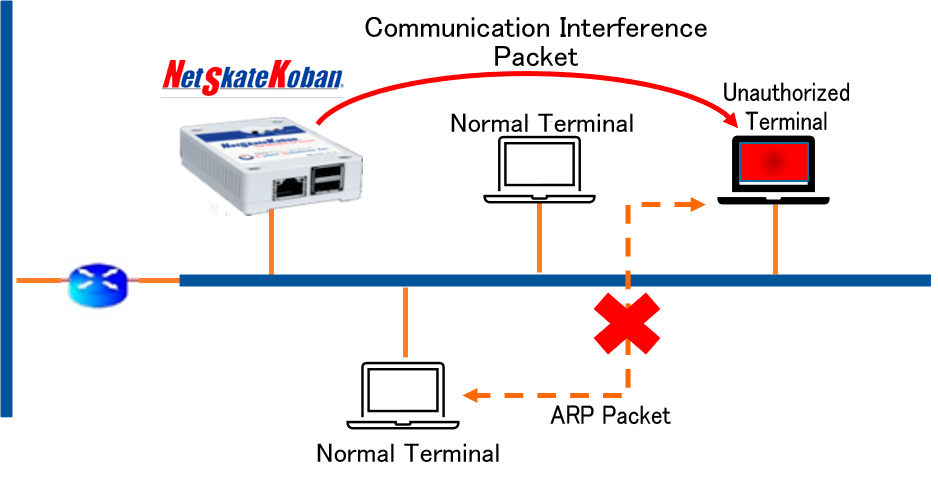Overview of Communication Interference
NetSkateKoban can interfere with the communication of a specific detected device. Specifically, it overwrites the MAC address in the IP address-MAC address correspondence table (ARP table) held by the terminal with the MAC address for interference, thereby interfering with communication to the target terminal.
In order to reliably block communications, the following points must be considered.
-
The ARP table is refreshed at regular intervals and must be overwritten whenever an unauthorized terminal attempts to interfere with communications.
This is because if the ARP table is rewritten by a request from an unauthorized terminal within this certain period of time, communication will become possible. -
In addition to interfering with communication from unauthorized terminals to normal terminals, it is also necessary to prevent communications from normal terminals with unauthorized terminals.
NetSkateKoban's multi-faceted communication interference responds to these issues and provides more reliable communication interference.
What is Multilateral Communication Interference?
NetSkateKoban interferes with communication from multiple angles by combining the following four types of interference methods.
This more reliably blocks communications from and to target devices recognized as unauthorized devices.
1. Communication Interference with Unauthorized Terminals
Sends communication interference packets directly to unauthorized terminals.
2. Interfering with Transmissions from Terminals in the Same Segment
A packet is sent to other terminals (normal terminals) in the same segment with which the unauthorized terminal communicates, to interfere with communication with the unauthorized terminal.
3. Interference when Receiving ARP Requests from Unauthorized Terminals
Every time an ARP request from an unauthorized terminal is detected, it sends a packet to disrupt communication to the unauthorized terminal.

4. Constantly Interfering with Transmissions from Terminals in the Same Segment
It constantly sends interfering packets to normal terminals communicating with unauthorized terminals, rather than periodically.
By increasing the frequency of sending communication-interfering packets only to normal terminals that are actually attempting to communicate, communication between unauthorized terminals and normal terminals is strongly disrupted without placing an excessive load on the network.



